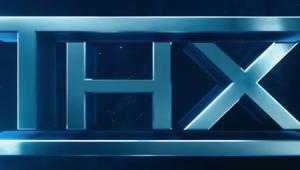A Hi-Res Call to Arms

15 Minutes with Jon Kiachian, VP, Hearing Health Technologies at Knowles Corp.
Jon Kiachian has spent the past 16 years working with the likes of National Semiconductor and Texas Instruments in technology-management positions. Today he is a vice president and general manager at Knowles, the global company responsible for developing the tiny microphones that allowed us to hear sound from the surface of Mars earlier this year. Kiachian oversees the business unit that develops technology to improve sound quality in a variety of electronics devices — a pursuit that’s more important than ever as high-resolution (hi-res) music reaches the masses through the likes of Amazon, Apple Music, Tidal, Qobuz, and other streaming services. In his role at Knowles, Kiachian has become a hi-res evangelist of sorts who believes audiophiles are “duty bound” to convince the millions of listeners who settle for bad sound that there’s a better option — a way to make the music they love really come alive.
S&V: Let’s start with a little background. What does Knowles Corporation do and what’s your role in the company?
 Jon Kiachian: Knowles has been a leader and global provider of advanced micro-acoustic microphones and speakers, audio processing, and precision device solutions for over 70 years. Since 1946 we’ve served a range of industries that rely on high performance microphones and audio processing. We have the unique opportunity to deliver audio, voice, and electronics solutions for users. From a consumer perspective, I like to describe Knowles this way: If you’re holding a smartphone, using earbuds, or giving a voice command, it’s highly likely that our technology is in action!
Jon Kiachian: Knowles has been a leader and global provider of advanced micro-acoustic microphones and speakers, audio processing, and precision device solutions for over 70 years. Since 1946 we’ve served a range of industries that rely on high performance microphones and audio processing. We have the unique opportunity to deliver audio, voice, and electronics solutions for users. From a consumer perspective, I like to describe Knowles this way: If you’re holding a smartphone, using earbuds, or giving a voice command, it’s highly likely that our technology is in action!
I’m responsible for managing the Hearing Health Technologies business unit, which includes microphones, balanced-armature receivers, and specialized assemblies for the hearing aid market and balanced armature receivers for the consumer “ear” market. On a day-to-day basis, I’m leading business development, operations, and R&D at Knowles to ensure our innovations come to market at their very best.
S&V: You’ve taken the position that the reign of low bit-rate music is over but has lasting consequences. Can you explain?
Kiachian: For 25 years now, mainstream listeners have become accustomed to “lossy,” low-bitrate music. For audio enthusiasts that's been a longstanding gripe, but it appears to be finally over. With lossless and hi-res streaming about to go mainstream, bit-reduced audio will now go the way of the 8-track. That leaves an entire generation of listeners who don't know anything better and probably think they can't hear a difference. For audiophiles, this is a moment for true public service — a time to spread the word that high-quality audio is not only back but better than ever.
Let's face it, MP3 and other lossy codecs were a good idea in the 90s when they were needed. They deserve the credit for making today's music delivery ecosystem possible. They made acquisition cheaper and easier so more listeners got to hear more music. Since they also made distribution cheap and easy, they brought a lot of new music into the world and created a lot of new music lovers. Lossy codecs did their job. They deserve a hand on their way out.
But they also deserve the back of the hand, because they foisted a quarter-century of sterile audio listening that has resulted in billions of tin ears. Perceptual codecs have shaped the world of music listening as surely as stereo did more than a half century ago, and not in a positive way. Mainstream listeners are hard pressed to appreciate musical subtleties when for years, algorithms have taught them (and many musicians and engineers) that these subtleties aren't really "necessary" to hear. That work now has to be un-done.
S&V: How so? Sounds like a pretty tall order…
Kiachian: In many cases, ordinary people are shy about their listening skills. Many think they can't hear differences in audio — only golden-ear types can. Testing has even shown that some young people actually prefer the flat sound of bit-reduced audio. This is madness that experienced listeners are duty-bound to fix.
Testing has shown that some young people actually prefer the flat sound of bit-reduced audio. This is madness that experienced listeners are duty-bound to fix.
Begin your public service by assuring your friends and all who'll listen that they really can hear the difference. The rational among them will immediately understand that more digital information a.k.a. higher bit-rate means more sound. Even non-technical folks already understand that when they save a small JPEG of a family photo it doesn't look as good as the original. When you tell them that an MP3 routinely throws out 80% of a song's data, you've likely made a convert. Those who need more proof are often quickly convinced with a simple comparison between lossy and lossless tracks, even without formal A-B-X testing. Play it for them. Let them hear the difference. They'll thank you for it.
S&V: Is there a particular track or demo you can share — one you like to use to convince friends they can hear the difference?
Kiachian: I recommend listening to the HD versions of the jazz standard “Take Five” (The Dave Brubeck Quartet, originally recorded in 1959 on Columbia Records) and the Eagles’ “Hotel California” (1977, Hotel California). On Take Five, listen to the percussion at the beginning, especially after the sax comes in. When streamed in a low-resolution format the cymbals will sound indistinct, like little bursts of noise lost in the background. With an HD audio setup, each note will be distinct and clear, a vital part of the performance.
Listen to Hotel California and try to pick out the different instruments during the bridge. Can you hear each guitar and the percussion, or does it sound like a solo guitar on top of a cacophony? With HD audio each instrument will contribute to the whole. It becomes immediately apparent why Hotel California is one of the most loved Eagles songs.





























































